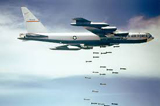Yogic insights into human psychology
Some processes and premises in Yoga
Abstract
The field of yoga may be called as the field of the psycho-spiritual evolution of man. Its base is the inner subjective space and human body as it stands today. As in any field, yoga involves certain processes and premises that relate to its field of the psychological evolution of man. We discuss some of these premises and processes in this article.
The basic premise of yoga
One of the basic premises of yoga is that human nature moves within a certain spectrum of consciousness. It is naturally limited by this magic circle of consciousness and therefore cannot see, understand or know if there is anything behind and beyond our range of perception, until we break free from this magic circle. In fact even what we understand within this limited range is in fact an ignorance, even though it works!
To give an example, a mechanic fixing some part of a car can do an admirable repair job but he is unlikely to know the dynamics of that part, its constitution, its interconnectedness with other parts, least of all anything about the designer and the driver! He does not even know or care to know of the owner’s intent in buying the car and his further travel plans, the tasks he wants to accomplish and the places he intends to go or even if he plans to upgrade his vehicle for other purposes. To know these things he must learn complex engineering, depth psychology and speak to the owner intimately. But he neither needs to learn these for his limited sphere of work nor seeks to know beyond what is of immediate concern for his everyday living. His practical understanding is admirable, his work flawless and appreciable, his skill remarkable. Yet his knowledge is incomplete, partial, with many loose ends and unconnected dots.
The different fields of nature
Something similar goes on with all of us. We as a human race have discovered ways and means within the limits of our ignorance to manage and manipulate our outer lives. But the inner fields continue to be what they were. We do not throw stones but have replaced it with bombs and hurling abuses and lies. We know how our physical heart functions but are unaware of ways and means to master our emotions, the psychological heart within us. Thus limited within, we are unable to either enjoy or live life to its fullness. Yoga science reveals to us this inner technology, the complex play of subtle and occult energies and forces that weave the inner texture of our lives.
Seen thus, we can safely say that yoga does not contradict modern or material science, it only compliments it. The two fields are different. Even as man is not matter alone, science is also not limited to material science and a study of material physical processes. If anything, it makes our knowledge of ourselves and the world around us more complete. There is in fact no antagonism between the two as is often proposed by strong adherents of a strictly material formulation of life.
Fortunately such dogmatic scientists are decreasing in number. More and more scientists are turning to enter and engage with the inner fields of nature that we have ignored so far.
Our psychological apparatus
With this background we can now enter the actual processes of yoga and see their inner logic. Basically our human psychological apparatus moves by certain forces that form the complex psychological matrix of our being. These forces are termed as will, emotions, thoughts, impulses, passion, desires, etc. Here again we discover that under each category there are many varieties. Let us take thought, for instance.
Thought, for example climbs from one solely concerned with the physical world around us such as the weather, the sensory experiences of everyday life, the sensations of heat and cold, our physical body, physical circumstances and surroundings, those connected to us by physical birth, etc. There is however another thought that is centered around desires, the things and objects and people who give us pleasure, food and sex and the rest that is often used by human beings as means to satisfy our dwarf desires. But desires may be even larger, such as expansion of an empire or business, amassing wealth, ambition to succeed and increase our sphere of influence.
A third kind of thought deals with imagination and fantasy. Often we find it mixed with our emotional being. This kind of thought provides suitable attire to a variety of feelings and sentiments. It is the thought that certain artists experience. There is in this thought a cry and anguish for happier things, a longing for love and togetherness, a pain for what the world should be but is not yet. It therefore easily lends itself to imagination as its only door of escape.
A fourth layer of thought is what we normally regard as thought proper. It uses analysis and reason and sees and understands everything by breaking it down into convenient pieces and then trying to build a composite system of theory for our daily understanding of life. It modifies the sense experience, suppresses the noises of desires and the cry of emotions and removing these things which it regards as interference, tries to understand life and the self and the world. This is the peak of average humanity as of today. This is the highest possibility of thought that most human beings experience and because of that certify it as the limit of human thinking and understanding. But thought does not stop here.
The ascent of thought
The yogin, piercing beyond the thinker’s fence, enters into other modes of thought that deal with a different order of experiences that are right now not easily accessible to man. The reason for this inaccessibility is often cited as the absence of any such experience. But it becomes easy enough to understand that this inaccessibility is in fact an inability due to the limits imposed by nature around each species. The animal cannot think of philosophy or poetry because its cognitive ability is grossly limited. But man can. So too there are ranges of thought and experiences that man normally cannot reach but by certain practices of yoga he can.
These still higher ranges of thought are symbolic thoughts that see in all objects a symbol of another deeper Reality. There is yet another discerning thought that is able to distinguish between the true and the false. There is a revelatory thought as well as creative bursts of inspiration that brings down illumination as well as cooling showers from higher states giving that famous ‘Aha’ experience of a sudden burst of insight as if a light had struck the dark rooms of our mind and revealed in a flash what we had been struggling to know for decades.
Thought climbs even further, beyond insight there is the direct sight of the seer. There is the possibility within us of the awakening of intuition and intuitive thought that enters large spaces of time and reveals to us what is still hidden within the folds of unknown fate. And there is yet another beyond this into the realm of pure Ideas, not ideas as we mentally understand but the Idea-forces that stand behind creation and lend an inner impulsion to things in their progressive unfolding.
Beyond this, thought enters into Silence, its secret birthplace. Here, in this Silence it beholds all things in a comprehensive and total cosmic vision and expresses what it beholds through words and language that ring with the sense of the absolute and the certainty of Truth.
The means of Knowledge
This makes a hierarchy of thought itself. But we do not ordinarily experience these higher levels of thought. Yet by the practice of yoga the doors of our limited consciousness open and we awaken to these higher possibilities that give us much more direct access to knowledge. Here the very understanding of knowledge changes.
Knowledge is not something we acquire or build by putting together bits and pieces of information after they have been subjected to the power of reason and analysis. This, in the language of yoga, is an illusion of knowledge, a workable system, convenient and practical and yet false. We come back to our original analogy. The electric line man knows how to fix the fuse and restore electricity due to the blowing up of a wire. But he does not know what exactly electricity is.
So also the electrical engineer knows the laws of electricity but he is not the one who created electricity. He has simply found ways and means of ‘tapping’ the electricity that is inherent in matter and material phenomena. It is this power that is already inherent in nature, this power that has mysteriously determined its laws and processes in keeping with the total balance of other forces and powers operating in nature that is called Knowledge.
This Knowledge is one with this power in nature and is everywhere and in everything. It is this that sets limits and creates boundaries and laws so that each element of creation acts as if independently and yet is secretly connected with the whole. In one word, it is the Consciousness that is inherent in creation and all things within it. The yogin arrives at this Knowledge that is already there in everything as ‘Consciousness’. By doing so, he knows the secret law of everything by a direct identification between his own consciousness and that of the object whose secret he seeks to know, whether it be that of this material world or of the highest and most sublime worlds now hidden to our sight and conscious experience.
His knowledge being direct does not need to clothe itself in abstract mathematical formulas or elaborate theories of biology and psychology which are indirect means of knowing and hence always incomplete. Just as a man or an animal knows his hunger because he is experiencing it, and has become identified with it while others can only infer, rightly or wrongly by observing outer signs and signals, so too it is possible to know things through a direct identification and not through indirect sense data. This is the kind of knowledge that operates in animals as instinct and in matter as the ‘law of things’. In man this can be rediscovered by an ascent of thought to intuition.
The necessity of faith
What then is the process? The process is in fact as logical as anything else. Whether one seeks a heightening of thought or a deepening of emotions or a change of governance of nature by replacing the human will by the Divine, the basic steps are the same. The first, of course, is faith, by which is meant faith in the possibility of upgrading our nature.
This faith is not a blind faith or superstition as some would believe. It is based on countless empirical evidence cutting through time and space. Also this faith is not meant to turn into a rigid and fixed belief-system but as a starting-point so that we can meaningfully engage in the process which is often a long and difficult labour. But the purpose of this inner labour is to eventually convert this faith into a living knowledge.
By living we mean a knowledge that constantly unfolds itself in countless ways because it is not a fixed dogma of the mind but the constant revelation of a free and infinite Consciousness which cannot be bound by any human formula or rule. The beginnings of this faith may be through contact with someone in whom the Truth that we seek appears manifest. Or else it may be born straight from the contact with one’s soul that knows the Truth regardless of appearances. Of course an intrinsic faith is always more powerful than one that depends always on contact with someone. In fact all true Masters awaken this inner faith as soon as the disciple allows it.
Concentration
Once the faith has awakened there should be a sincere seeking, an effort towards the goal. This seeking for the higher truths now hidden or covered increases with time and intensifies through concentration. To aid this concentration one can use the help of an image or word or idea. The mind then constantly dwells upon this Idea or Image or Word, investing more and more of one’s energies into it. Instead of letting our energies diffuse in the usual goals and directions, it is turned inwards and potentiated and intensified by concentration. It is like feeding the fire.
The logic of it is very simple. Whatever we concentrate upon tends to increase, be it a state of suffering, a difficulty or even something such as material success. By concentrating our energies we augment it. Thus, for thought, one concentrates on the Highest Idea one can envisage and holds it as long and as often as one can. If this Idea is embodied in a string of words born out of the force of the inner realisation of a yogin, then it carries its own mystic power. This is the mantra used by many as a most powerful aid to pierce the magic circle of nature and open the passage to the Beyond.
The mantra
The mantra is not just any set of words to keep the mind occupied but a string of words or even a single word that is charged by and expressive of the state of consciousness that one wants to acquire. There is profound subtle truth in sounds and words that are seen by a mystic not just as symbols of intellectual meanings (which of course they may be in most cases) but rather expressive of deeper soul-states. Words and thoughts are not only symbols but also vehicles of states of consciousness. They are naturally imbued with that power.
Even sounds are carriers of vibrations and thereby able to communicate states of consciousness in the hearer. Animals know this instinctively and use sounds very effectively to induce fear or affection or rage or even anxiety through a modulation of frequencies of the sounds they emit. These sounds become signals that spread far and wide creating a corresponding atmosphere around the animals. With human beings there is the additional power of speech that can further potentiate the state, express new and higher states not accessible to the animal world and thereby create a subtle atmosphere around us.
The collective atmosphere around us
In fact we live surrounded by the atmosphere created by our thoughts. We breathe our desires and that of others, our aspirations and those of others, creating an invisible interchange that exists as a matrix in the thought-world and which influences us. That is why it is so important to take care of the company one keeps. That is also the reason why yoga practitioners often gravitate towards places where yoga is a way of life, a commune of sadhakas and aspirants since the matrix supports their aspiration.
While it is true that yoga can be done anywhere and everywhere, it is equally true that the process can be greatly facilitated (or hindered) by the collectivity in which one lives. Even if they cannot live permanently there they need to withdraw to this place and the atmosphere supporting their new-born aspiration so as to strengthen it. Later, once the fire has grown or the walls of nature pierced and the barriers broken then it does not matter. One simply surges ahead like a tornado carrying others too along the path towards one’s goal. A suitable place or atmosphere, the power of concentration, the help of a mantra are therefore some of the means for ascending beyond the limits of human nature into higher and higher states of consciousness.
Birth of aspiration
Concentration, mantra, atmosphere, etc. are but aids. A time comes when as a result of these things a fire is lit in the heart of the human being, or rather the spark of Truth hidden within him, covered by layers and layers of obscurity, is suddenly lit up into a flame. This is accompanied with the birth of a conscious aspiration. Our initial vague seeking, attraction towards this or that path, the straining and groping and musings of the mind, an imperfect and hasty practice of this or that method, matures into some deeper self within. One day this deeper self breaks down the barrier between our outer self and inner being and we become conscious of an aspiration that actively seeks what it inwardly already is.
This aspiration is like a fire that burns down the obscure layers and a warmth and sweetness and light and longing that carries its own force, needing no other external method or aid, are born in us. It is the infant divinity, the seed that breaks through the outer crust of the ego-self, the blue-print of God within us. It is with this birth that yoga truly begins. All the rest, the methods used, the processes practised, the reading of books and dabbling in philosophy are but preparations. Yoga begins with aspiration, proceeds by its growth and ends by it reaching and identifying with the object of its seeking.
Dr. Alok Pandey, an editor of NAMAH and a member of SAIIIHR, is a doctor practising at the Sri Aurobindo Ashram.
Share with us (Comments,contributions,opinions)
When reproducing this feature, please credit NAMAH,and give the byline. Please send us cuttings.








